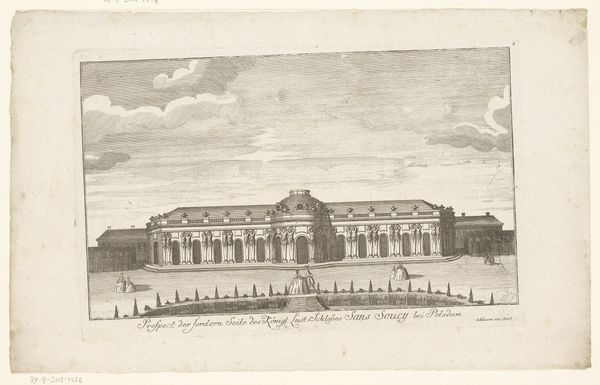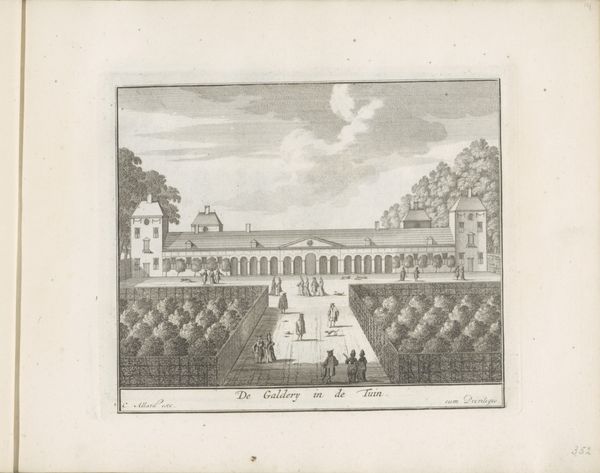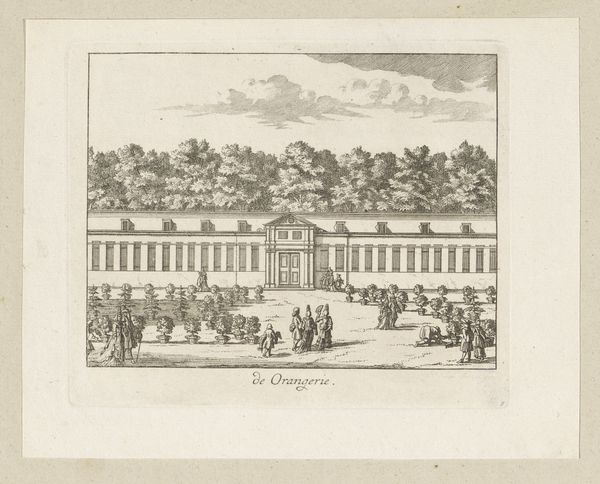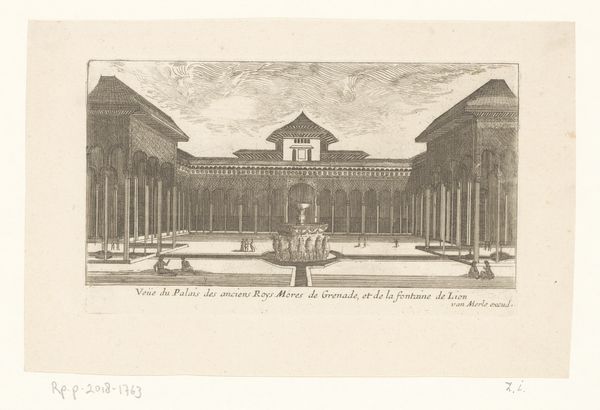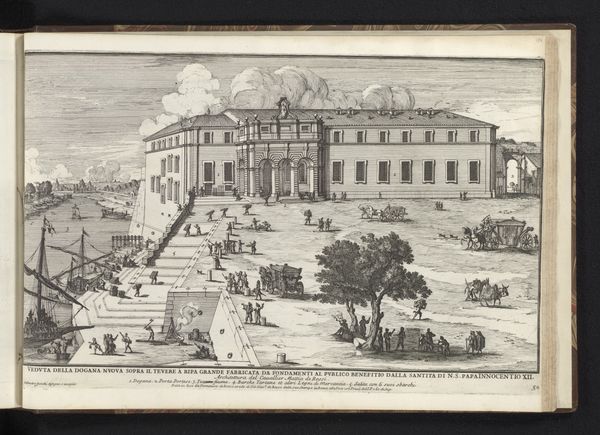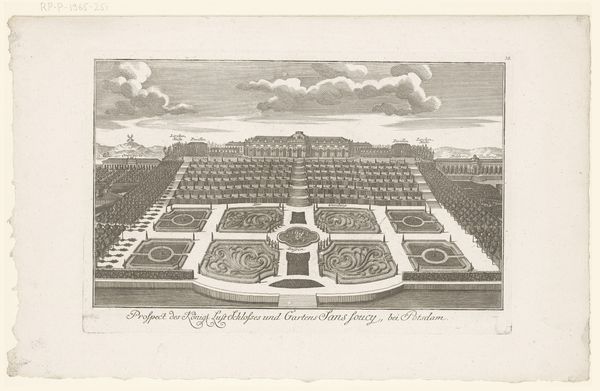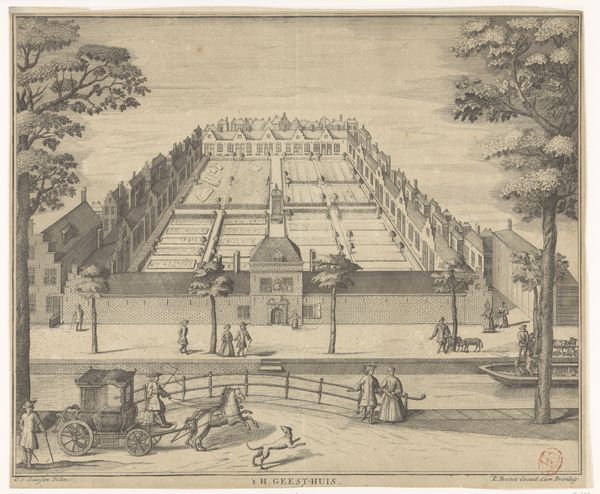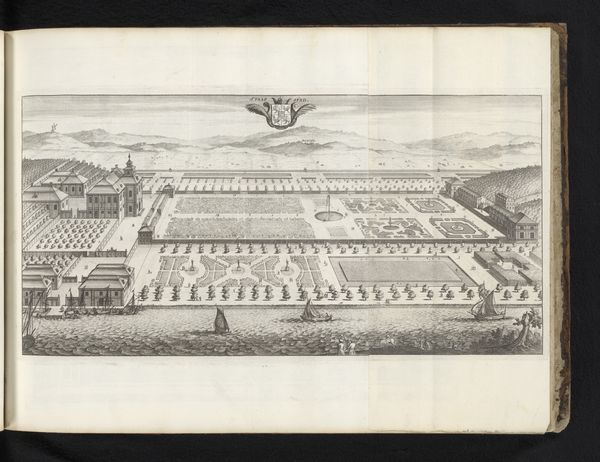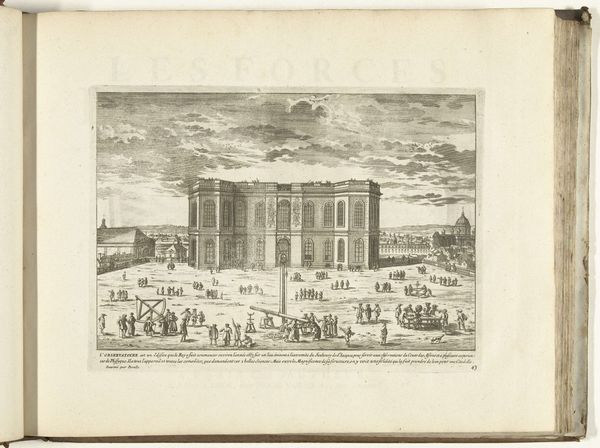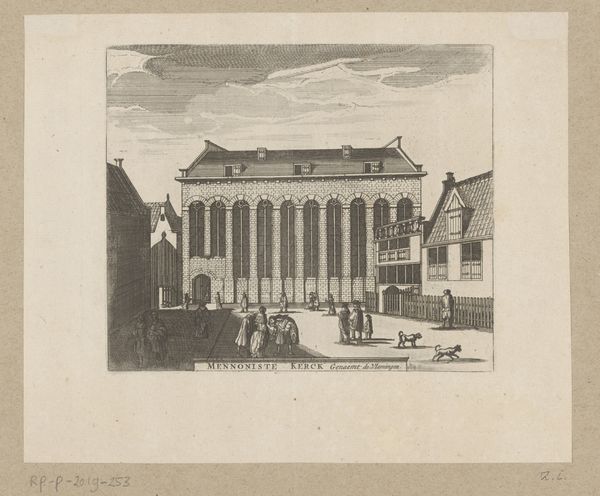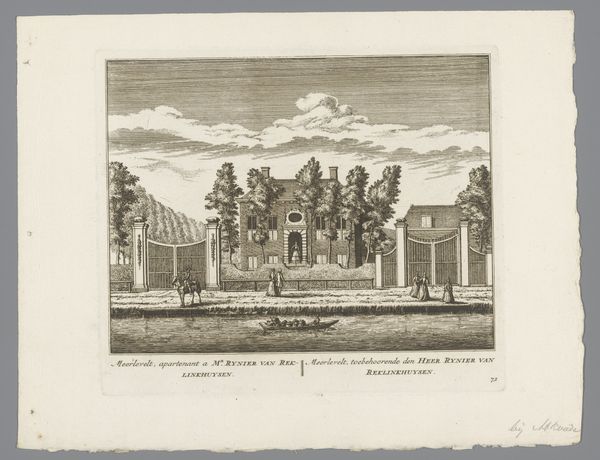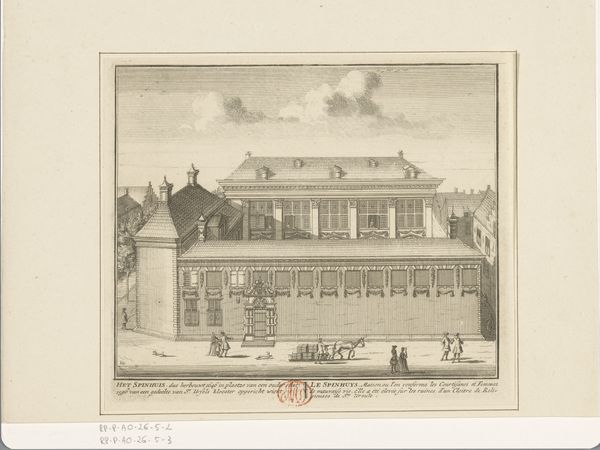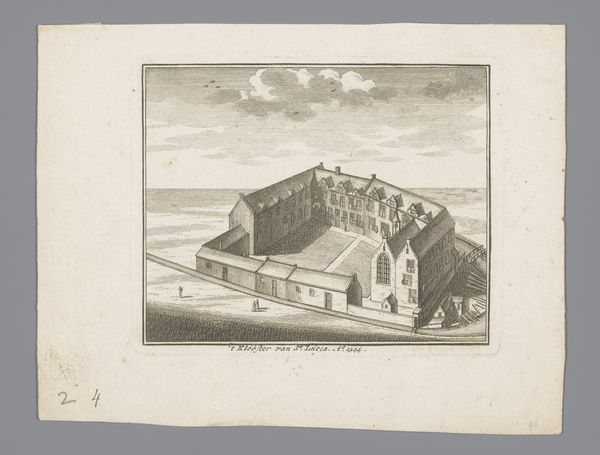
print, engraving, architecture
#
baroque
# print
#
old engraving style
#
landscape
#
personal sketchbook
#
engraving
#
architecture
Dimensions: height 211 mm, width 324 mm
Copyright: Rijks Museum: Open Domain
Curator: Before us is a print entitled "Gezicht op de achterzijde van Slot Sanssouci," which translates to "View of the Rear of Sanssouci Palace," dating from between 1747 and 1774. It’s an engraving held here at the Rijksmuseum. Editor: My first impression is one of measured serenity. The crisp lines of the engraving emphasize the architectural order, a deliberate geometry that suggests rational control over nature. The tonal range is constrained yet effective, allowing the formal qualities to take precedence. Curator: Precisely. This work gives insight into 18th-century European court life. Sanssouci was Frederick the Great's private retreat, meant to be a space free from the pressures of state. Prints like these were commissioned and circulated, shaping perceptions and legitimizing power. Editor: The composition itself reinforces this sense of controlled power. Note how the circular colonnade acts as a kind of proscenium, framing the palace as a stage for royal life. It directs the viewer’s eye along clearly defined planes and axes. It presents us a hierarchy with the building reigning supreme. Curator: The surrounding landscape, depicted in detail with a meticulous engraving style, subtly highlights this "escape." Sanssouci as an ideal is conveyed, which in reality, as we learn through correspondence, might not have matched Frederick's experience. Editor: True. The people in the scene are almost incidental, serving primarily to give scale to the architecture. They seem like adornments, perhaps reflecting the structured social order he desired. And I think of the engraver as having produced not just an image, but a symbolic structure in and of itself. Curator: Indeed, we can view such imagery of the palace, its grounds, and inhabitants, not only as aesthetic products but rather components within larger political, social, and personal frameworks. The printing press played a huge part in distributing architectural ideas and cultural ideologies. Editor: Considering the linear quality and defined forms in this Baroque presentation, it’s rewarding to recognize how each precise detail reinforces both an intended atmosphere and social function of the building, both now and then.
Comments
No comments
Be the first to comment and join the conversation on the ultimate creative platform.
